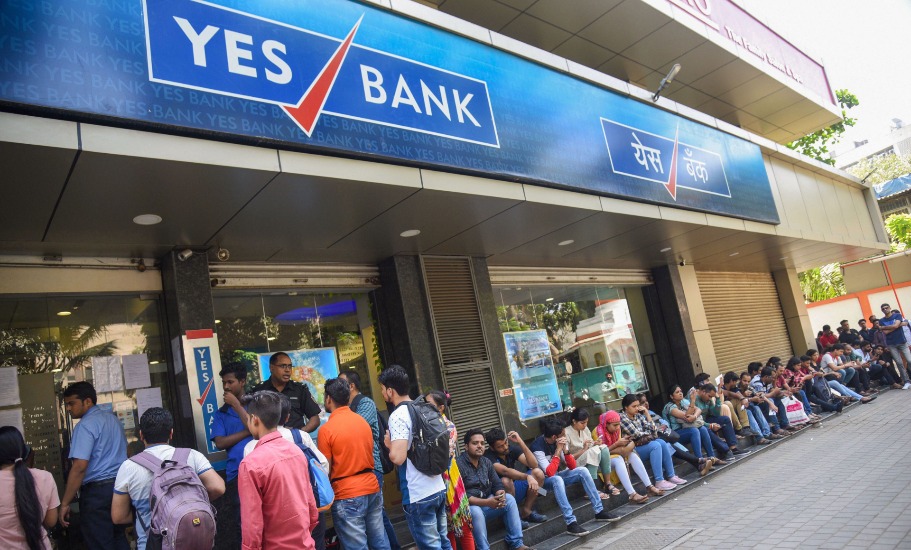
Bank deposit insurance: Where it works, where it falls short
DICGC ensures depositors’ money stays safe, at least up to an extent, but the lack of risk-based premiums is flawed, say experts

At an event earlier this month, Prime Minister Narendra Modi handed over cheques to beneficiaries under the Deposit Insurance and Credit Guarantee Corporation (DICGC) Act and said ₹1,300 crore had been paid to over 1 lakh people under the scheme.
It is comforting to know that the government is ensuring that depositors’ money is guaranteed, at least up to an extent, in the case of a bank failure. Yet, economists and banking professionals have pointed out flaws in the system, particularly the lack of risk-based deposit insurance premiums.
What is deposit insurance?
It is the insurance on your deposit in a bank, across instruments — savings account, fixed deposit, recurring deposit and so on. Under the DICGC Act, in India, your bank money is insured up to ₹5 lakh. That means if you’ve invested ₹10 lakh across various deposits in a bank that goes defunct, you will get at least ₹5 lakh back without delay.
Audio & Story: India’s semi-plan for semiconductors
The scheme is not exactly new. Deposit insurance coverage of ₹30,000 was introduced in 1961, and enhanced to ₹1 lakh in 1993. Since then, it remained the same till the Centre, in Union Budget 2020, hiked the insurance ₹5 lakh. What spurred the move was a spate of bank failures, such as Punjab & Maharashtra Co-operative (PMC) Bank, Yes Bank and Lakshmi Vilas Bank, that caused immense hardship to small investors — including pensioners — who lost immediate access to their money.
Did Indian bank depositors ever lose money?
They didn’t, say bankers. Whenever a scheduled commercial bank failed, the Reserve Bank of India (RBI) made sure depositors eventually got their money back. But the process had stretched for years together, even up to 10 years, since depositors had to wait for the bank to be liquidated before their funds were returned.
Under DICGC, depositors will get ₹5 lakh within 90 days. The first 45 days is for the DICGC to collect information on deposit accounts. The balance days are to review the information and repay depositors.
Who provides the insurance?
The DICGC, a wholly owned subsidiary of the RBI, facilitates the ₹5 lakh coverage, including the principal and interest amounts. It has an almost fully automated system to receive claims and make settlements. The deposit insurance premiums are borne entirely by the respective banks, and the cover is provided by insurance companies.
All commercial banks including branches of foreign banks operating in India, local area banks and regional rural banks are insured under the scheme. It is mandatory, and no bank can opt out of it. This apart, all state, central and primary cooperative banks — referred to as urban cooperative banks — are also covered under the scheme. This is significant, as most of the failed banks in the recent past have been from this category.
The DICGC, however, does not offer insurance to depositors of non-banking finance corporations (NBFCs) and primary cooperative societies.
What are the perceived flaws in DICGC?
Economists say the DICGC should opt for risk-based pricing of deposit insurance premiums, rather than the flat one it stipulates now. This means banks that pose greater risks should be paying higher premiums. Not only would it be a fairer system, but also incentivise the institutions to be ‘less risky’. The present norm of uniform premium has to be overhauled, say experts.
Also, there is concern that private insurers will abstain from covering bank deposits, considering the giant risk it may pose. Further, investors are more likely to feel reassured when the insurer covering their deposits is backed by the government. After all, insurance companies themselves going bankrupt is not unheard of — in 2008, AIG faced a huge crisis and had to be rescued by the US government.
It is also feared that increased deposit insurance may lead to investor complacence. If a ₹5 lakh deposit is going to fetch 5% in Bank A and 7% in Bank B, the investor would gravitate to the latter though it is eminently riskier, for the insurance cover would anyway be the same. Experts point out that investors who are urged to be cautious while investing in mutual funds, equity markets and real estate should be similarly directed to study banks before putting their money in them.
How can investors optimise the scheme?
The ₹5 lakh ceiling applies to an investor’s deposit in one particular bank, across all branches. So, investors can spread their deposits across various banks, so that they get ₹5 lakh coverage in each of those banks.
It may be noted that it doesn’t help to spread the deposits across various branches of the same bank, since the insurance amount altogether will get capped at ₹5 lakh. For example, an investor who has ₹20 lakh can put ₹5 lakh each in four different banks, so that the entire ₹20 lakh is covered.
The best route, of course, would be to exercise caution at the time of choosing a bank. Opting for one solely because it offers higher interest rates is never safe. A sound track record, a wide network of branches and ATM services, and good service standards would be more prudent filters.


